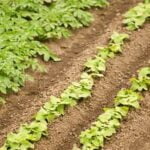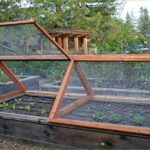Zone 8 vegetable gardening presents its own set of challenges and advantages due to its unique climate and growing conditions. Understanding the specific characteristics of Zone 8 is vital for successful vegetable gardening, as it allows gardeners to select the most suitable vegetables and implement the appropriate cultivation techniques. From suitable planting schedules to effective pest management, this guide will explore the key aspects of Zone 8 vegetable gardening, providing valuable insights for both novice and experienced gardeners.
Zone 8 encompasses regions with moderate winters and warm summers, making it an ideal environment for a wide variety of vegetables. However, the unique climate of Zone 8 also poses distinct challenges that must be addressed for successful cultivation. By delving into the specific growing conditions of Zone 8, gardeners can gain a deeper understanding of how to optimize their vegetable gardening efforts in this zone.
In this comprehensive guide, we will explore the best vegetable varieties suited for Zone 8, delve into soil preparation and maintenance techniques, provide a detailed planting schedule tailored to Zone 8’s climate, discuss seasonal care strategies, offer guidance on pest and disease management, examine best practices for watering and irrigation in Zone 8, and provide valuable tips on harvesting and storage.
Whether you are new to gardening in Zone 8 or seeking to enhance your existing knowledge, this article will equip you with the essential information needed for successful vegetable gardening in Zone 8.
Best Vegetable Varieties for Zone 8
When it comes to zone 8 vegetable gardening, choosing the right varieties of vegetables is crucial for a successful harvest. The unique climate and growing conditions of Zone 8 present both opportunities and challenges for gardeners. Fortunately, there are numerous vegetable varieties that thrive in this zone, allowing for a bountiful harvest throughout the growing season.
One of the top-performing vegetable varieties for Zone 8 is tomatoes. With proper care and maintenance, tomatoes can produce an abundant crop in this zone. Varieties such as “Celebrity,” “Early Girl,” and “Roma” are known for their adaptability to the climate and soil conditions in Zone 8. Additionally, bell peppers, cucumbers, and zucchinis are also well-suited for Zone 8 vegetable gardening. These vegetables not only tolerate the warm temperatures but also produce high yields when properly cared for.
Another set of vegetables that thrive in Zone 8 includes leafy greens such as lettuce, spinach, and kale. These cool-season crops can be grown both in the spring and fall in Zone 8, providing gardeners with an extended growing season. Additionally, root vegetables like carrots, beets, and radishes are well-adapted to the climate in Zone 8 and can be grown with great success.
Moreover, it’s important to consider heat-tolerant varieties for Zone 8 vegetable gardening. Given the warm summers in this zone, selecting heat-resistant plants such as okra, sweet potatoes, and southern peas can ensure a successful harvest. By choosing the right vegetable varieties that are well-suited for Zone 8’s specific climate and growing conditions, gardeners can enjoy a productive and rewarding gardening experience.
| Vegetable | Recommended Varieties |
|---|---|
| Tomatoes | Celebrity, Early Girl, Roma |
| Bell Peppers | California Wonder, Yolo Wonder |
| Lettuce | Romaine, Butterhead |
Soil Preparation and Maintenance
When it comes to successful zone 8 vegetable gardening, one of the most crucial factors to consider is soil preparation and maintenance. The unique climate and growing conditions of Zone 8 require specific techniques to ensure optimal vegetable growth. Here are some tips and techniques for preparing and maintaining the soil in Zone 8:
- Know Your Soil: Before you start planting your vegetables, it’s essential to understand the composition of your soil. Conduct a soil test to determine the pH level and nutrient content. This will help you make informed decisions about which amendments and fertilizers to use.
- Amend the Soil: In Zone 8, the soil may need amendments to improve its structure and fertility. Adding organic matter such as compost, well-rotted manure, or aged leaf mold can help improve drainage, water retention, and overall soil health.
- Mulch: Applying a layer of organic mulch around your vegetable plants can help regulate soil temperature, reduce weed growth, conserve moisture, and prevent erosion. Mulching with materials like straw, grass clippings, or shredded leaves is particularly beneficial in Zone 8’s hot and dry summers.
Properly preparing and maintaining the soil in Zone 8 is essential for successful vegetable gardening. By understanding your soil composition, amending it as needed, and using organic mulch, you can create an environment that supports healthy plant growth throughout the growing season. These tips will help you lay a solid foundation for a productive vegetable garden in Zone 8.
Planting Schedule
When it comes to successful zone 8 vegetable gardening, having a detailed planting schedule is essential for optimal growth and harvest. The unique climate and growing conditions of Zone 8 require careful planning and timing for sowing, transplanting, and harvesting vegetables. By following a well-thought-out planting schedule, gardeners in Zone 8 can maximize their yields and ensure a bountiful harvest throughout the growing season.
One of the key factors to consider when creating a planting schedule for Zone 8 vegetable gardening is the last frost date. Understanding the average date of the last frost in your specific area within Zone 8 will help you determine when it is safe to sow seeds directly into the ground or transplant seedlings outdoors.
Additionally, taking into account the first frost date in the fall will be crucial for planning the harvest of cold-sensitive vegetables before temperatures drop.
For vegetables that can tolerate cooler temperatures, such as peas, spinach, and lettuce, sowing seeds can often begin as early as late winter or early spring in Zone 8. Transplanting more sensitive plants like tomatoes, peppers, and eggplants should be scheduled after any risk of frost has passed to avoid damage to young plants.
As for harvesting, keeping track of recommended days to maturity for each vegetable variety will aid in planning when to expect a plentiful harvest throughout the growing season.
In addition to planting based on frost dates and days to maturity, considering staggered planting for certain crops can also extend the harvest period. This involves sowing seeds or transplanting seedlings at intervals over several weeks rather than all at once. This method can prolong the availability of fresh produce and prevent an overwhelming surplus at one time. All these considerations contribute to a comprehensive planting schedule that maximizes productivity and success in zone 8 vegetable gardening.
Seasonal Care
When it comes to vegetable gardening in Zone 8, understanding the unique seasonal care requirements is essential for successful plant growth and production. The climate in Zone 8 typically consists of hot summers and mild winters, creating a diverse set of challenges for gardeners throughout the year. By implementing specific strategies tailored to each season, you can ensure that your vegetable plants thrive and produce bountiful harvests.
Spring Care
In the spring, it’s crucial to focus on preparing the soil and getting your vegetable garden off to a strong start. Begin by clearing any debris or weeds that have accumulated over the winter months. Then, prepare the soil by adding organic matter such as compost or aged manure to improve its fertility and structure. As temperatures start to rise, consider planting heat-tolerant vegetables such as tomatoes, peppers, and cucumbers.
Summer Care
During the hot summer months in Zone 8, it’s important to provide adequate water and shade for your vegetable plants. Consider using mulch to conserve soil moisture and protect against extreme temperatures. Additionally, regular watering is essential to prevent heat stress and keep plants healthy. Be vigilant about monitoring for common pests and diseases that thrive in warm weather, and take proactive measures to manage any issues that arise.
Fall Care
As temperatures begin to cool down in the fall, shift your focus towards extending the growing season for your vegetables. Consider planting cold-hardy varieties such as kale, lettuce, and carrots that can withstand frost. Additionally, protect your plants from sudden temperature drops by using row covers or cloches. This season also provides an opportunity for harvesting late-season crops and preserving produce through techniques such as canning or freezing.
By paying close attention to seasonal care strategies in Zone 8 vegetable gardening, you can create an environment that promotes healthy plant growth and maximizes yield throughout the year. Each season presents its own set of challenges and opportunities, so it’s important to adjust your approach accordingly as you work towards a successful harvest.
Pest and Disease Management
When it comes to successfully cultivating a vegetable garden in Zone 8, it’s essential to be aware of the common pests and diseases that can affect your plants. By understanding how to identify, prevent, and manage these issues, you can ensure a healthy and bountiful harvest. In Zone 8, there are specific pests and diseases that gardeners should be particularly vigilant against. Educating yourself about these potential threats will help you take proactive measures to protect your vegetable garden.
Identifying Common Pests and Diseases
One of the first steps in effective pest and disease management is being able to identify the common threats in Zone 8. Some of the most prevalent pests include aphids, caterpillars, and spider mites, while common diseases may include powdery mildew, blight, and root rot. By learning to recognize the signs of these pests and diseases, such as discoloration of leaves or unusual spots on fruits, gardeners can take swift action to address the issues before they spread.
Preventative Measures
Preventing pests and diseases from taking hold is crucial for maintaining a healthy vegetable garden in Zone 8. This can be achieved through practices such as crop rotation, proper spacing between plants, using disease-resistant varieties, and maintaining good garden hygiene by regularly removing debris or fallen fruit. Additionally, implementing natural methods such as introducing beneficial insects or using organic pest repellents can help deter unwanted visitors from your garden.
Managing Pest and Disease Outbreaks
Despite best efforts at prevention, there may still be occasions where pests or diseases become problematic in a Zone 8 vegetable garden. In such cases, it’s important to have effective management strategies in place.
This may involve using targeted organic treatments for specific pests or diseases or seeking advice from local agricultural extension services for tailored recommendations based on the particular challenges of gardening in Zone 8. By staying proactive and attentive to potential issues throughout the growing season, gardeners can minimize the impact of pests and diseases on their vegetable crops.
Watering and Irrigation
One of the best practices for watering in Zone 8 is to provide deep, infrequent waterings to encourage strong root development. This can be achieved by using soaker hoses or drip irrigation systems to deliver water directly to the base of plants, minimizing evaporation and water waste. Additionally, applying a layer of mulch around vegetable plants can help retain soil moisture and reduce the frequency of watering needed.
It’s also important to monitor soil moisture levels regularly, particularly during periods of intense heat or drought. This can be done using a moisture meter or by simply checking the soil with your finger. When watering, it’s best to do so early in the morning or late in the afternoon to prevent rapid evaporation and ensure that plants have access to water when they need it most.
| Month | Watering Frequency |
|---|---|
| June | Twice per week |
| July | Three times per week |
| August | Four times per week |
Harvesting and Storage
In conclusion, the key to successful Zone 8 vegetable gardening lies in understanding the unique climate and growing conditions of this specific zone. By choosing the best-performing vegetable varieties, preparing and maintaining the soil properly, following a detailed planting schedule, implementing seasonal care strategies, managing pests and diseases effectively, and utilizing proper watering and irrigation practices, gardeners can ensure optimal vegetable growth in Zone 8.
When it comes to harvesting and storage, it is crucial to pay attention to the specific needs of each vegetable variety. Harvesting at the right time is essential to ensure peak flavor and nutritional content. Proper storage and preservation techniques such as canning, pickling, freezing, or using root cellars can help extend the shelf life of harvested vegetables from Zone 8 gardens.
Ultimately, with dedication and sound horticultural practices based on the unique characteristics of Zone 8, gardeners can enjoy a bountiful harvest of delicious and nutritious vegetables throughout the growing season. By following the guidance provided in this comprehensive guide for Zone 8 vegetable gardening, both novice and experienced gardeners alike can achieve success in their endeavors.
Frequently Asked Questions
What Vegetables Are Good for Zone 8?
Vegetables that grow well in Zone 8 include tomatoes, peppers, squash, cucumbers, and beans. These warm-season vegetables thrive in the long, hot summers of Zone 8 and can be harvested throughout the growing season.
What Is the Difference Between Planting Zone 8a and 8b?
The main difference between Planting Zone 8a and 8b is the average annual minimum winter temperature. Zone 8a has a minimum temperature of 10-15°F, while Zone 8b has a slightly warmer minimum temperature of 15-20°F. This difference can affect the types of plants that can survive in each subzone.
What Plants Grow Best in Hardiness Zone 8?
Plants that grow best in Hardiness Zone 8 are those that can tolerate both the mild winters and hot summers typical of this zone. Some examples include lavender, rosemary, crepe myrtle, daylilies, and hydrangeas. These plants thrive in the long growing season and moderate temperatures of Zone 8.

If you’re looking to get into vegetable gardening, or are just looking for some tips on how to make your current garden better, then you’ve come to the right place! My name is Ethel and I have been gardening for years. In this blog, I’m going to share with you some of my best tips on how to create a successful vegetable garden.





